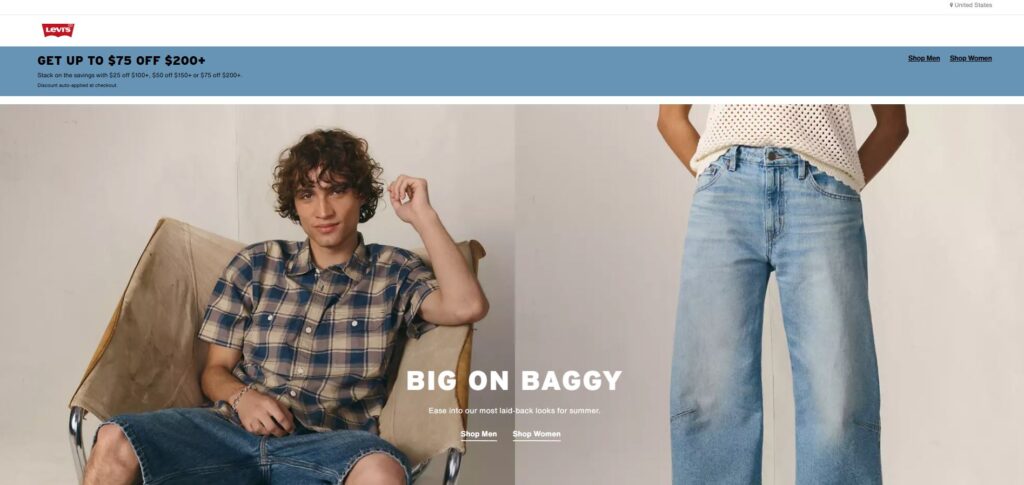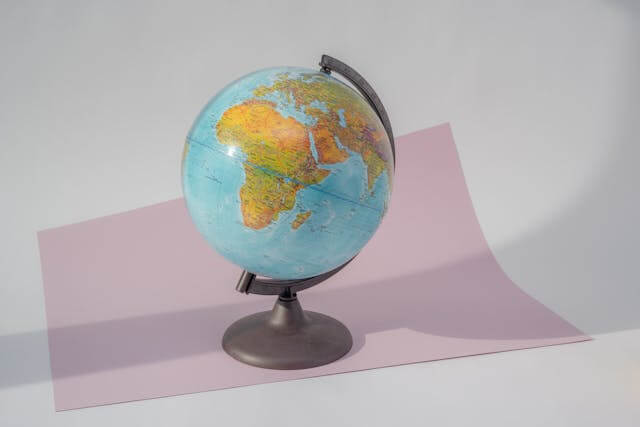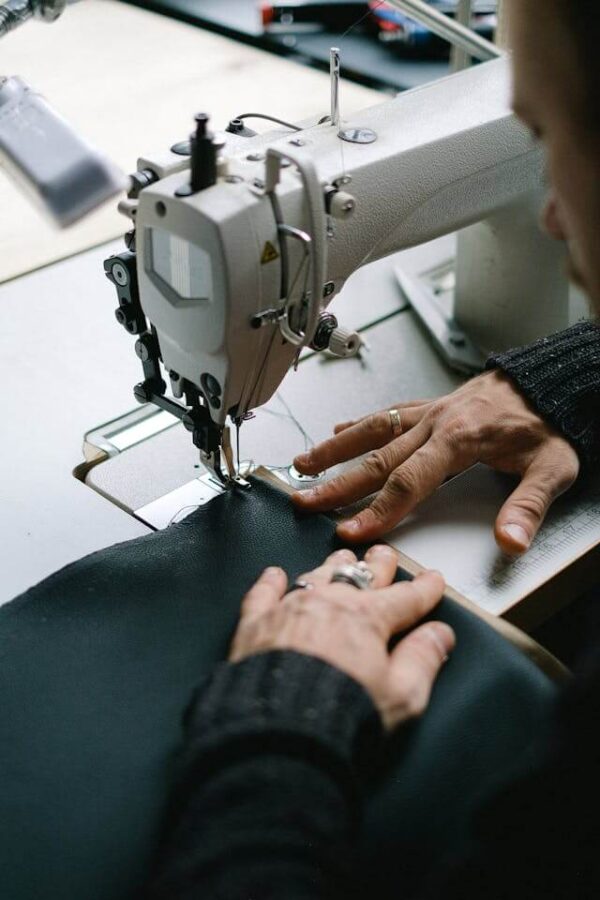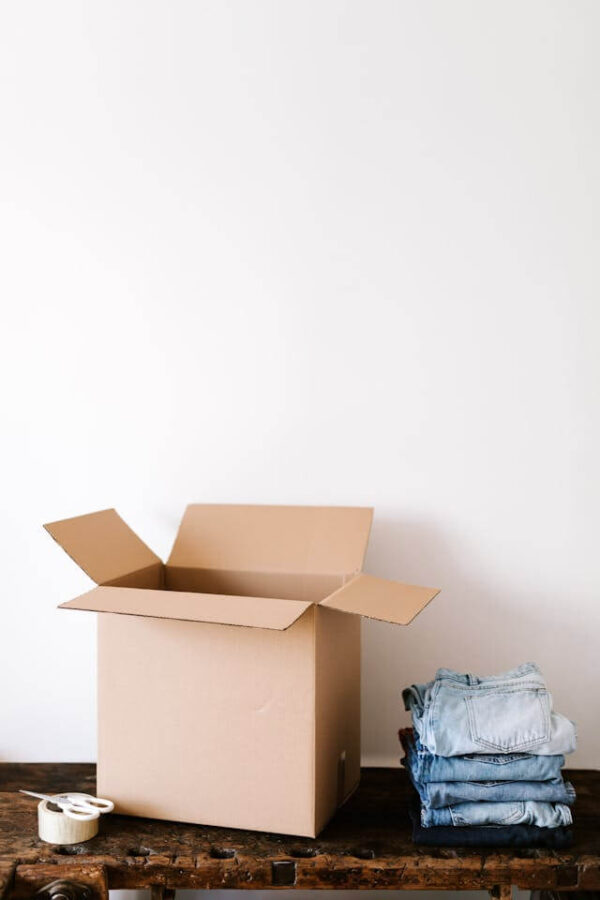When it comes to denim, Levi’s is a global icon, but few people know where their jeans are actually made.
The brand doesn’t rely on one factory or even one country. Instead, Levi’s works with hundreds of suppliers across China, Vietnam, India and many more.
In this guide, we’ll take a closer look at where Levi’s jeans are made, what makes these countries key production hubs.
We’ll also cover how you can find reliable denim suppliers, especially in China, where many of Levi’s partners are based.
What Is Levi’s?

Levi’s is one of the most iconic denim brands in the world, known for pioneering blue jeans in the late 1800s.
Founded in 1853 by Levi Strauss in San Francisco, the company became famous for creating durable workwear, especially the original 501 jeans, which are still in production today.
Over the years, Levi’s has evolved into a global fashion brand, offering a wide range of denim products including jeans, jackets, shorts, and shirts for men, women, and kids.
Despite its premium image, Levi’s doesn’t manufacture all of its products in-house. Instead, it works with a vast network of global suppliers and factories, particularly in Asia, to handle production at scale.
For dropshippers and private label sellers, Levi’s is a benchmark for quality, consistency, and global sourcing strategy.
Studying how the company structures its supply chain offers valuable lessons for anyone looking to build a reliable clothing and jeans brand.
Where Are Levi’s Jeans Made?

Levi’s jeans are made all over the world. The company works with over 500 supplier facilities in more than 40 countries, allowing it to tap into different strengths like skilled labor, advanced manufacturing, and cost-effective production.
Some countries, like China, Bangladesh, Vietnam, India, and Mexico, play a larger role than others.
For example, it’s estimated that China alone accounts for around 20–30% of Levi’s global production. This kind of global sourcing helps Levi’s stay flexible, manage costs, and reduce risk.
Below is a closer look at the main countries involved in producing Levi’s jeans, including why they’re chosen and what makes each region unique.
| Country | Est. Production Share | Avg Labor Cost/hr | Certifications | Key Strengths |
| China | 20–30% | $3.9–$6.3 | ISO 9001 | Scale, tech, automation |
| Bangladesh | ~20% | $0.60–$1.00 | WRAP | Low cost, strong apparel industry |
| Vietnam | 15–20% | $2.50–$3.50 | International Std. | Skilled labor, proximity to Asia |
| India | 15–20% | $1.50–$3.00 | SA8000 | High-quality cotton, low cost |
| Mexico | 10–15% | $3.00–$5.00 | Local equivalents | Near US, faster shipping |
| Others | <10% | Varies | Varies | Niche regional strengths |
China (Estimated Global Production: 20–30%)
- Production hubs: Guangdong, Zhejiang
- Labor cost: $3.90–$6.30/hour
- Certifications: Many suppliers are ISO 9001 certified
- Sustainability: Select Chinese factories use Levi’s Water<Less® technology, reducing water usage by up to 96%
- Why Levi’s produces here: China offers cutting-edge manufacturing tech, high-volume capacity, and a strong domestic market
Bangladesh (Estimated Global Production: ~20%)
- Production hubs: Dhaka, Chittagong
- Labor cost: $0.60–$1.00/hour
- Certifications: WRAP-certified factories and rising safety standards
- Sustainability: Levi’s partners with local suppliers to implement eco-tech and reduce textile waste
- Why Levi’s produces here: Low labor costs and a mature garment industry make Bangladesh a key outsourcing hub for denim
Vietnam (Estimated Global Production: 15–20%)
- Production hubs: Ho Chi Minh City, Hanoi
- Labor cost: $2.50–$3.50/hour
- Certifications: Factories meet international quality standards
- Sustainability: Focus on energy-efficient operations and sustainable materials
- Why Levi’s produces here: Skilled labor and steady growth in the textile sector make Vietnam ideal for quality-focused production
India (Estimated Global Production: 15–20%)
- Production hubs: Gujarat, Maharashtra (Ahmedabad, Mumbai)
- Labor cost: $1.50–$3.00/hour
- Certifications: SA8000 and labor-compliant factories
- Sustainability: Organic cotton sourcing and water conservation programs are in place
- Why Levi’s produces here: Local cotton resources + cost-effective labor = efficient high-volume output
Mexico (Estimated Global Production: 10–15%)
- Production hub: Torreón, Coahuila
- Labor cost: $3.00–$5.00/hour
- Certifications: Factories follow U.S.-equivalent quality standards
- Sustainability: Carbon footprint reduction and local sourcing initiatives
- Why Levi’s produces here: Close to the U.S. market with fast logistics and favorable trade agreements (USMCA)
Other Notable Supplier Countries

Pakistan
- Why it matters: Strong cotton production and growing denim export capacity
- Levi’s presence: Levi Strauss Pakistan (Pvt) Ltd. in Lahore
- Updates: Joined the 2024 Pakistan Accord for sustainable manufacturing and worker safety
Turkey
- Why it matters: High-quality denim craftsmanship and fast access to European market
- Hubs: Istanbul, Izmir
Egypt
- Why it matters: Access to premium cotton and a long textile histor
- Sustainability: Adoption of eco-friendly manufacturing practices
Cambodia
- Why it matters: Low labor costs and ethical partnerships
- Sustainability: Focus on cleaner production and labor rights
The Production Process of Levi’s Jeans
Levi’s jeans go through a meticulous production process that ensures durability, style, and sustainability.
While denim manufacturing follows a general pattern, Levi’s incorporates unique techniques and strict quality control measures that set its jeans apart.
1. Fabric Selection and Cutting
Levi’s primarily sources denim from leading textile mills worldwide, ensuring high-quality cotton blends and sustainable materials.
The brand has been expanding its use of organic cotton, recycled fibers, and hemp-based denim to reduce environmental impact.
The fabric is then cut into precise patterns based on Levi’s signature fits, from the iconic 501® to modern slim-cut styles.
2. Sewing and Assembly

The cut fabric pieces move to production lines, where skilled workers stitch them together. Levi’s maintains consistent stitching standards, ensuring reinforced seams for durability.
The signature double-stitched arcuate (back pocket design) and riveted stress points are carefully applied during this phase, maintaining the brand’s signature look and durability.
3. Washing and Finishing (Water<Less® Technology)
This is where Levi’s truly stands out. Instead of traditional heavy-water washing techniques, Levi’s employs its proprietary Water<Less® technology, which reduces water usage by up to 96% in denim finishing.
The jeans undergo various treatments, stone washing, enzyme washing, or laser distressing, to achieve different shades and textures.
Levi’s also integrates ozone finishing and plant-based softeners to further minimize environmental impact.
4. Quality Control and Testing
Levi’s has strict quality control measures at every stage of production. The jeans undergo durability tests, colorfastness checks, and stress testing to ensure they meet Levi’s high standards.
Each batch is inspected for stitching accuracy, fabric strength, and proper fit before being approved for distribution. Factories producing Levi’s jeans must comply with the brand’s Worker Well-being initiative, ensuring ethical manufacturing practices.
5. Packaging and Distribution

Once approved, the finished jeans are labeled, tagged, and packed for distribution. Levi’s partners with eco-conscious packaging suppliers to reduce plastic waste.
The products are then shipped worldwide to Levi’s retail stores, eCommerce platforms, and third-party sellers.
Why This Matters for Finding High-Quality Suppliers
Levi’s rigorous production process sets a benchmark for quality. If you’re looking for alternative suppliers that match Levi’s standards, focus on manufacturers with:
- Experience in water-efficient denim finishing methods.
- Compliance with global labor and sustainability standards.
- Proven expertise in durable stitching and reinforced designs.
By sourcing from suppliers that follow these principles, you can offer high-quality jeans that rival Levi’s in craftsmanship and sustainability.
How to Find High-Quality Jeans Suppliers Like Levi’s?
Finding a direct Levi’s supplier is highly unlikely, as the company partners with established manufacturers under strict contracts. However, you can still source high-quality denim suppliers in Levi’s-producing regions by using smart research strategies. Here’s how:
1. Use Online Sourcing Platforms (with the Right Filters)
Platforms like Alibaba, Global Sources, and Made-in-China can help you find reliable denim manufacturers, but only if you filter wisely.
- Search for denim jeans manufacturers in China, Vietnam, Bangladesh, Mexico, or Turkey (key Levi’s hubs).
- Look for suppliers with “Verified” or “Gold” status and positive client reviews.
- Filter by minimum order quantity (MOQ) and check if they support private labeling or custom designs.
- Request samples to test quality before committing to bulk orders.
2. Attend Industry Trade Shows
Trade shows provide direct access to experienced denim manufacturers. Here are some of the best:
- Denim Première Vision (Europe) – Focuses on premium denim and sustainable innovations.
- Kingpins Show (Amsterdam, New York, Hong Kong) – Features top-tier denim suppliers and fabric mills.
- Canton Fair (China) – Offers a vast selection of clothing manufacturers, including denim suppliers.
- Texworld (Paris, New York) – Connects fashion brands with global textile manufacturers.
Meeting suppliers in person allows you to inspect quality firsthand and negotiate better deals.
3. Work with Sourcing Agents

Finding a high-quality jeans supplier can be challenging, especially when aiming for the same level of quality as Levi’s.
A trusted sourcing agent can simplify the process by connecting you with reliable jeans manufacturers in regions where Levi’s produces its denim.
These agents have insider knowledge of factories that meet high production standards and can help you negotiate pricing, manage quality control, and verify ethical sourcing practices.
For businesses looking for private-label jeans manufacturers, working with an agent like NicheSources ensures that you find factories capable of producing high-quality denim, similar to what big brands like Levi’s require.
Instead of spending weeks researching and vetting suppliers on your own, a sourcing agent can streamline the process and help you avoid unreliable manufacturers.
4. Research Levi’s Fabric Suppliers (An Indirect Lead)
Another effective strategy is to look at the denim mills that supply fabric to Levi’s. Leading textile mills such as Cone Denim (USA), Candiani (Italy), and Orta Anadolu (Turkey) are known for producing premium-quality denim.
Since many reputable jeans manufacturers source fabric from these mills, researching their client lists can provide valuable leads on suppliers capable of producing Levi’s-level quality.
5. Look for Factories with Reputable Certifications
Top-tier manufacturers often hold certifications that indicate high standards of quality, labor practices, and sustainability. Look for:
- WRAP (Worldwide Responsible Accredited Production) – Ensures ethical and safe working conditions.
- BSCI (Business Social Compliance Initiative) – Focuses on fair labor practices.
- GOTS (Global Organic Textile Standard) – Certifies organic and sustainable textile production.
- OEKO-TEX Standard 100 – Ensures fabric safety and chemical-free processing.
Suppliers with these certifications are more likely to meet Levi’s-level production and ethical standards.
How to Cooperate with Levi’s Jeans Factories in China?
While Levi’s partners with large-scale, vetted suppliers, working directly with these factories can be challenging for smaller businesses.
However, many of these manufacturers also take on private label and OEM orders for other brands, if approached the right way.
Here’s how to build successful cooperation:
1. Know What You’re Looking For
Start with a clear product brief:
- Type of jeans (e.g. skinny, straight, raw, distressed)
- Fabric specs (oz weight, stretch, wash)
- Quantity (MOQ matters!)
- Branding requirements (labels, tags, packaging)
Factories, especially those that work with big names expect organized buyers.
2. Use a Trusted Sourcing Agent
If you’re not in China or new to the process, working with a sourcing agent can save you time, money, and stress. Agents can:
- Match you with suitable jeans manufacturers (even Levi’s-tier suppliers)
- Negotiate MOQs and pricing
- Handle sampling, quality checks, and logistics
- Ensure factory compliance with labor and environmental standards
3. Start Small, Scale Fast
Most large factories are more willing to work with new clients if:
- You start with a sample order or small batch
- You communicate professionally and pay on time
- You show potential for ongoing orders
4. Protect Yourself Legally
Use clear contracts, product specifications, and inspection agreements before production. Consider third-party QC if you’re not using a sourcing agent.
5. Think Beyond Levi’s
Levi’s suppliers are a benchmark, but China is full of high-quality denim manufacturers who can match the quality at a more flexible scale. Focus on finding the right fit for your brand, not just big-name factories.
Want more inspiration? Here’s a reading list of other popular brands to learn from.
- Where Are Asics Made
- Where Are Hoka Shoes Made
- Where Are Keen Shoes Made
- Where Are Van Shoes Made
- Where are Nike Shoes Made
- Where Are Adidas Made
- Where Are Salomon Shoes Made
- Where Are Puma Shoes Made
Frequently Asked Questions
How Many Suppliers Work with Levi’s?
Levi’s work with numerous suppliers spread across different geographies to maintain their vast inventory of products.
They are committed to transparency and have a map of supplier facilities as part of their sustainability initiatives.
These suppliers play a crucial role in helping Levi’s maintain its commitment to product quality and ethical sourcing practices.
Are There Factories That Produce Levi’s and Also Work With Private Labels?
Yes, some factories that manufacture Levi’s products also take private-label orders. Large apparel factories often work with multiple brands, producing jeans under different labels based on client specifications.
However, these factories don’t openly advertise their connection to Levi’s due to strict confidentiality agreements. The best way to find them is by researching factories in Levi’s key manufacturing countries, such as China, Bangladesh, Vietnam, and Turkey.
You can also look for denim manufacturers with certifications like WRAP, BSCI, or ISO, as these indicate high production standards. Attending trade shows like Magic Las Vegas or Denim Première Vision and working with sourcing agents can further help you connect with these manufacturers.
If you’re looking for high-quality private-label jeans manufacturers, sourcing agents like NicheSources can help you find reliable suppliers that meet Levi’s-level quality.
Sourcing Jeans from China with Niche
Levi’s works with factories all over the world, and their approach shows just how important it is to choose the right suppliers.
If you’re planning to start your own denim brand or want to find a reliable jeans manufacturer, learning from their sourcing strategy is a great place to start.
Whether you need private-label jeans, bulk orders, or just want a factory that meets Levi’s-level standards, we’re here to help. NicheSources can connect you with trusted suppliers, handle the back-and-forth, and make sure everything runs smoothly.
Let us take care of the hard part. Contact us today for a free quote and start sourcing with confidence.

